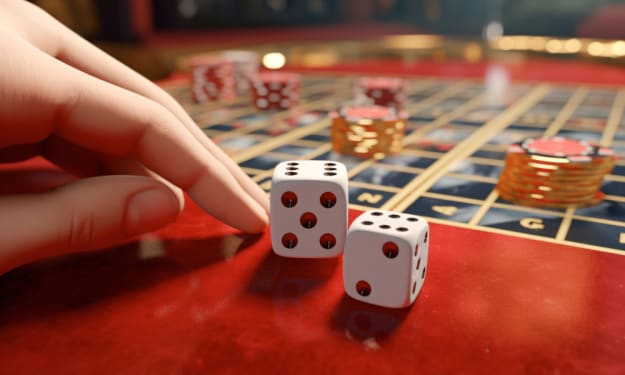Who made gaming possible and how?
It's Interesting.
In a not-so-distant future, gaming had evolved into an unimaginable realm of possibility. It was no longer confined to screens or consoles but had transcended into a fully immersive experience that brought virtual worlds to life. This marvel of technology was made possible by the visionary genius of a young prodigy named Alex Mitchell.
Alex Mitchell had always been fascinated by video games and the endless potential they held. As a child, he spent countless hours tinkering with computers, learning to code, and dreaming of creating his own games. He had an insatiable curiosity and an unyielding determination to push the boundaries of what was considered possible.
During his teenage years, Alex discovered the field of virtual reality (VR) and became captivated by its potential. He saw VR as a gateway to a new form of gaming, one that would blur the lines between the real world and the virtual one. Alex dedicated himself to mastering the intricacies of VR technology and computer science, studying day and night to acquire the necessary skills.
After years of tireless effort and countless failed prototypes, Alex finally achieved a breakthrough. He developed a revolutionary device called the NeuroSync, a state-of-the-art neural interface that allowed users to enter virtual worlds with unparalleled immersion. The NeuroSync bypassed traditional input methods and connected directly to the user's brain, translating their thoughts and actions into the game environment.
With the NeuroSync, gamers were no longer limited to controlling avatars through buttons or joysticks. They could move, jump, and interact with objects using their own bodies and minds. It was a game-changer, quite literally, and the world took notice.
As news of Alex's invention spread, gaming enthusiasts and industry leaders flocked to witness the marvel of the NeuroSync firsthand. Major gaming companies recognized the potential of this groundbreaking technology and sought to collaborate with Alex. After careful consideration, he partnered with Elementus Corporation, a renowned tech conglomerate known for pushing the boundaries of innovation.
Under the guidance of Elementus, Alex's invention underwent rigorous testing and refinement. The NeuroSync was made safer, more user-friendly, and affordable for a wider audience. The gaming world was on the verge of a revolution, and anticipation grew exponentially.
Finally, the day arrived when the NeuroSync was ready for its grand unveiling. The gaming community held its breath as Alex took the stage, a humble yet determined figure amidst a sea of flashing lights and roaring applause. He demonstrated the power of the NeuroSync by diving into a virtual world himself, showcasing the fluidity of movement, the stunning graphics, and the indistinguishable blend of the real and the virtual.
The audience was spellbound. The NeuroSync promised a gaming experience like no other, and gamers around the world clamored to get their hands on it. Within weeks, stores were flooded with pre-orders, and the gaming industry witnessed a surge of excitement and anticipation not seen since the advent of consoles.
Alex Mitchell had forever changed the landscape of gaming. His vision, determination, and unwavering passion had brought virtual reality to the forefront, opening doors to infinite possibilities. Through his invention, gamers could explore vast, immersive worlds, embark on epic adventures, and connect with others on a level never before thought possible.
As years passed, the NeuroSync continued to evolve, becoming more sophisticated, intuitive, and seamlessly integrated into everyday life. It wasn't just limited to gaming anymore. The applications of the NeuroSync expanded into areas such as education, therapy, and scientific research, forever transforming the way humans interacted with technology.
Alex Mitchell's name became synonymous with innovation, a pioneer who bridged the gap between imagination and reality. His legacy as the creator of the NeuroSync would be remembered for generations to come, inspiring countless individuals to push the boundaries of what was possible and explore the uncharted realms of human potential.
About the Creator
Enjoyed the story? Support the Creator.
Subscribe for free to receive all their stories in your feed. You could also pledge your support or give them a one-off tip, letting them know you appreciate their work.





Comments
There are no comments for this story
Be the first to respond and start the conversation.